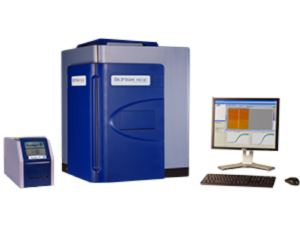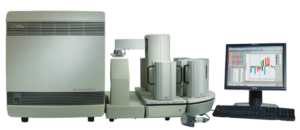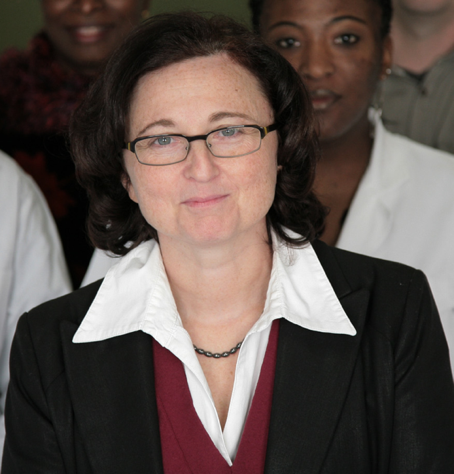Genomics of Pediatric Liver Tumors
Genomics of Pediatric Liver Tumors
Team Leader
Projects
In the Genomics of Pediatric Liver Tumors group, we analyze different genomic datasets (whole-exome and whole-genome sequencing, RNA-seq, DNA methylation data), and we develop innovative computational tools to better understand the origin and the molecular diversity of tumors. We explore several research axes, as described below.
Identification of genes driving hepatocellular carcinogenesis
Tumor cells harbor numerous molecular alterations (mutations, chromosome gains and losses, translocations) that can alter the function or the activity of target genes. We develop computational approaches to integrate these alterations and identify genes recurrently altered, which are likely to play a key role in oncogenesis. By analyzing the exome sequences of 250 hepatocellular carcinomas, we recently identified 161 putative driver genes belonging to 11 major cellular pathways (Schulze, Imbeaud, Letouzé et al., Nat Genet 2015). We now analyze whole-genome sequencing data to identify non-coding mutations likely to affect the regulatory sequences of target genes, like the activating mutations of TERT promoter (Nault et al., Nat Commun 2013).

Mutational signatures
Somatic mutations that drive cancer progression are the consequence of spontaneous enzymatic conversions, replication errors, or mutagenic exposures like tobacco or UV light. These mutational processes leave imprints on the tumor genome that can be identified as mutational signatures, caracterized by specific types of mutations or mutations occurring in specific genomic contexts. For instance, tobacco carcinogenes induce mostly C>A mutations, whereas defects in DNA mismatch repair genes lead to an enriched frequency of C>T mutations in NCG trinucleotide context. By analyzing a large series of liver tumors by whole-exome sequencing, we have identified 2 new mutational signatures caracteristic of liver tumors (Schulze, Imbeaud, Letouzé et al., Nat Genet 2015). One of these signatures, caracterized by frequent C>A mutations at GCC trinucleotides, could be related to exposure to aflatoxin B1, a toxin produced by a mushroom in warm and wet countries of Africa and Asia. We now analyze whole-genome sequencing data from a new series of tumors, associated with diverse risk factors, to identify new signatures and distinguish mutational process operative in the early and late steps of oncogenesis. In collaboration with Pr Pierre Laurent-Puig’s team (UMR-S 1147), we also analyze the mutational signatures of other tumor types, like lung and colorectal cancer.

Clonal evolution of liver tumors
Tumors develop through the expansion of cell clones having acquired genomic alterations that confer them a proliferative advantage over surrounding cells. Several clones may coexist within a single tumor, including a dominant clone and one or more minor subclones. Understanding tumor heterogeneity is essential as subclones may harbor specific genetic defects conferring resistance to treatment. Besides, reconstructing the clonal architecture of a tumor allows to distinguish early from late genetic alterations, and to better understand the role of each driver gene. We currently analyze whole-genome sequencing data to reconstruct the clonal architecture of 50 liver tumors. In particular, we analyze cases of adenomas having progressed to carcinomas (Pilati et al., Cancer Cell 2014), to identify the molecular events triggering malignant transformation.
Epigenetic signatures of oncogenic processes
Epigenetic profiles (DNA methylation, histone modifications, chromatin conformation) are highly rearranged in tumor cells. Besides, numerous epigenetic regulators, implicated in DNA (de)methylation or chromatin remodeling, are frequently mutated, in particular in liver cancers. However, the mechanistic link between these molecular alterations and the epigenetic profiles of tumors remains poorly understood. By analyzing the methylome of a large series of liver tumors previously characterized by whole-exome sequencing, we wish to identify specific DNA methylation signatures. We will then correlate these signatures with clinical (exposure to risk factors) and molecular annotations (mutations in epigenetic regulators) to identify the cause of each pattern. This project aims at understanding how altered epigenetic profiles are established, and how the affect the transcriptome of tumor cells. In collaboration with INSERM UMR970 team (Dr Judith Favier), we also study the hypermethylator phenotype induced by succinate dehydrogenase mutations in paraganglioma (Letouzé et al., Cancer Cell 2013).
Insertional mutagenesis by AAV and HBV virus
Virus, including hepatitis B virus (HBV) and hepatitis C, are major causes of hepatocellular carcinomas (HCC) worldwide. HBV is a well-known oncogenic DNA virus in liver tumors that induces insertional mutagenesis, chromosome instability and expression of oncogenic viral proteins. Currently only 2 other DNA viruses (merkel polyomavirus and human papilloma virus) are known to induce oncogenic insertional mutagenesis in human. Recently we obtained very innovative results showing that genomic approaches can help to identify new risk factors of HCC and modified our understanding of the disease. We showed that the adeno-associated virus type 2 (AAV2) is involved in HCC development on normal liver due to insertional mutagenesis in cancer genes (1). Currently, AAV is the 8th virus known associated to human cancer. The first identification of recurrent oncogenic AAV2 insertions in liver tumors leads us to develop a research project aiming to identify viral sequences and possibly new AAV integration sites in different types of liver tumors. As recombinant AAV is used as a vector for gene therapy in human clinical trials, a fine understanding of the mechanisms of carcinogenesis of the wild type virus is mandatory to assess the potential risk of cancer development after gene therapy. The objective is to quantify the contribution of AAV infection to the development of liver tumors in patients with liver disease related to various etiologies or without liver disease. We aim to identify new risk factors of hepatocellular carcinoma by analyzing tumor genomes and to validate them in epidemio-molecular studies through a comprehensive analysis of the tumor, host and viral genomes.
Transcriptome deregulation in liver tumors
Transcriptome profiling of liver tumors using DNA microarrays allowed us to identify homogeneous molecular groups of tumors, associated with distinct molecular alterations and risk factors (Boyault et al., Hepatology 2007). With the advent of high-throughput sequencing, we can now study the transcriptome by directly sequencing the RNAs extracted from a tumor sample (RNA-seq technique). These data give access to an unprecedented wealth of information. In addition to gene expression levels, RNA-seq data give access to the structure and sequence of transcripts, and allow the discovery of new genes. We have generated in the lab the RNA-seq profiles of a large series of liver tumors. We now develop innovative bioinformatic approaches to (1) refine the molecular classfication of liver tumors, (2) analyze the deregulation of non-coding RNAs, (3) detect alternative splicing and allele specific expression in tumors, and (4) identify the mutations that are actually expressed (more likely to play an oncogenic role) and RNA editing events.
Development of an annotation database
The development of genetics and new in-depth and high throughput technologies results in massive data production. Moreover, the multiplicity of programs and genomic annotations through “genome browsers” has created a “jungle” of terminology which requires the establishment and use of a unified vocabulary. In this context, we design and develop a database for structuring, annotation and exploitation of this mass of data generated by genomics programs. This project will, in collaboration with the EBCI Company, the implementation of an efficient IT infrastructure to meet our mixed data model, including clinic, histological and molecular datasets, to lead (1) the optimization of the architecture of our data model, (2) the management of the annotation including updates, and (3) optimizing a Web server to allow biologists to efficiently query data.
Team
Publications
APC germline hepatoblastomas demonstrate cisplatin-induced intratumor tertiary lymphoid structures. Morcrette G, Hirsch TZ, Badour E, Pilet J, Caruso S, Calderaro J, Martin Y, Imbeaud S, Letouzé E, Rebouissou S, Branchereau S, Taque S, Chardot C, Guettier C, Scoazec JY, Fabre M, Brugières L, Zucman-Rossi J. Oncoimmunology. 2019 Mar 28;8(6):e1583547. doi: 10.1080/2162402X.2019.1583547. eCollection 2019.
Analysis of Liver Cancer Cell Lines Identifies Agents With Likely Efficacy Against Hepatocellular Carcinoma and Markers of Response. Caruso S, Calatayud AL, Pilet J, La Bella T, Rekik S, Imbeaud S, Letouzé E, Meunier L, Bayard Q, Rohr-Udilova N, Péneau C, Grasl-Kraupp B, de Koning L, Ouine B, Bioulac-Sage P, Couchy G, Calderaro J, Nault JC, Zucman-Rossi J, Rebouissou S. Gastroenterology. 2019 May 4. pii: S0016-5085(19)36771-X. doi: 10.1053/j.gastro.2019.05.001.
A 17-Beta-Hydroxysteroid Dehydrogenase 13 Variant Protects From Hepatocellular Carcinoma Development in Alcoholic Liver Disease. Yang J, Trépo E, Nahon P, Cao Q, Moreno C, Letouzé E, Imbeaud S, Bayard Q, Gustot T, Deviere J, Bioulac-Sage P, Calderaro J, Ganne-Carrié N, Laurent A, Blanc JF, Guyot E, Sutton A, Ziol M, Zucman-Rossi J, Nault JC. Hepatology. 2019 Mar 25. doi: 10.1002/hep.30623.
Cyclin A2/E1 activation defines a hepatocellular carcinoma subclass with a rearrangement signature of replication stress. Bayard Q, Meunier L, Peneau C, Renault V, Shinde J, Nault JC, Mami I, Couchy G, Amaddeo G, Tubacher E, Bacq D, Meyer V, La Bella T, Debaillon-Vesque A, Bioulac-Sage P, Seror O, Blanc JF, Calderaro J, Deleuze JF, Imbeaud S, Zucman-Rossi J, Letouzé E. Nat Commun. 2018 Dec 7;9(1):5235. doi: 10.1038/s41467-018-07552-9.
PNPLA3 and TM6SF2 variants as risk factors of hepatocellular carcinoma across various etiologies and severity of underlying liver diseases. Yang J, Trépo E, Nahon P, Cao Q, Moreno C, Letouzé E, Imbeaud S, Gustot T, Deviere J, Debette S, Amouyel P, Bioulac-Sage P, Calderaro J, Ganne-Carrié N, Laurent A, Blanc JF, Guyot E, Sutton A, Ziol M, Zucman-Rossi J, Nault JC. Int J Cancer. 2019 Feb 1;144(3):533-544. doi: 10.1002/ijc.31910. Epub 2018 Nov 9.
Systemic AA Amyloidosis Caused by Inflammatory Hepatocellular Adenoma. Calderaro J, Letouzé E, Bayard Q, Boulai A, Renault V, Deleuze JF, Bestard O, Franco D, Zafrani ES, Nault JC, Moutschen M, Zucman-Rossi J. N Engl J Med. 2018 Sep 20;379(12):1178-1180. doi: 10.1056/NEJMc1805673.
Palimpsest: an R package for studying mutational and structural variant signatures along clonal evolution in cancer. Shinde J, Bayard Q, Imbeaud S, Hirsch TZ, Liu F, Renault V, Zucman-Rossi J, Letouzé E. Bioinformatics. 2018 Oct 1;34(19):3380-3381. doi: 10.1093/bioinformatics/bty388.
Argininosuccinate synthase 1 and periportal gene expression in sonic hedgehog hepatocellular adenomas. Nault JC, Couchy G, Caruso S, Meunier L, Caruana L, Letouzé E, Rebouissou S, Paradis V, Calderaro J, Zucman-Rossi J. Hepatology. 2018 Sep;68(3):964-976. doi: 10.1002/hep.29884. Epub 2018 Jun 6.
Mutational signatures reveal the dynamic interplay of risk factors and cellular processes during liver tumorigenesis. Letouzé E, Shinde J, Renault V, Couchy G, Blanc JF, Tubacher E, Bayard Q, Bacq D, Meyer V, Semhoun J, Bioulac-Sage P, Prévôt S, Azoulay D, Paradis V, Imbeaud S, Deleuze JF, Zucman-Rossi J.
More on Pubmed
Publications & Data
Our Public Data
2019
Gastroenterology – Caruso et al – Analysis of Liver Cancer Cell Lines Identifies Agents With Likely Efficacy Against Hepatocellular Carcinoma and Markers of Response.
| Item | Data | Details |
|---|---|---|
| Cell lines | LCCL_description | Description of liver cancer cell lines. |
| Cell lines | Somatic_alterations | List of putative somatic genomic alterations identified in 34 Liver Cancer Cell Lines by whole-exome sequencing. |
| Cell lines | Fusion_transcripts | Fusion transcripts identified in 34 liver cancer cell lines by RNA-sequencing. |
| Cell lines | HBV_fusions | HBV RNA fusions identified by RNA-sequencing among 34 liver cancer cell lines. |
| Cell lines | Drivers | List of the 252 cancer driver genes used to analyze association between drug sensitivity and genetic alterations in 34 liver cancer cell lines. |
| Cell lines | RNAseq_vsn | RNA expression in 34 liver cancer cell lines (vsn) |
| Cell lines | RNAseq_FPMK | RNA expression in 34 liver cancer cell lines (FPKM) |
| Cell lines | microRNAseq_vsn | microRNA expression in 34 liver cancer cell lines (vsn) |
| Cell lines | microRNAseq_RPM | microRNA expression in 34 liver cancer cell lines (RPM) |
| Cell lines | Protein_expression | Expression of 126 proteins analyzed by RPPA in 34 liver cancer cell lines (log2-transformed). |
| Cell lines/Drugs | AUC | Drug sensitivity in 34 liver cancer cell lines. Table of AUC values for each drug |
| Cell lines/Drugs | GI50 | Drug sensitivity in 34 liver cancer cell lines. Table of GI50 values for each drug |
| Drugs | Screened_compounds | Description of screened compounds. |
Read More
Molecular & Cellular Analysis Instruments
Advanced Technologies within FunGeST lab
Persons in charge
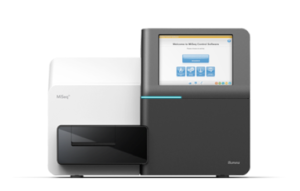 Illumina MiSeq
Illumina MiSeq
Manufacturer’s description: The MiSeq desktop sequencer allows you to access more focused applications such as targeted gene sequencing, metagenomics, small genome sequencing, targeted gene expression, amplicon sequencing, and HLA typing. New MiSeq reagents enable up to 15 Gb of output with 25 M sequencing reads and 2×300 bp read lengths.
Applications currently used: Targeted sequencing (paired-end 2x150bp) using multiplexed PCR for library preparation.
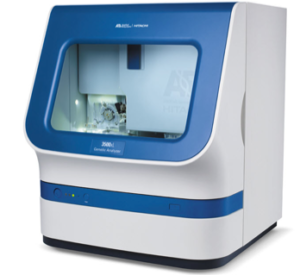
Applied Biosystems 3500 XL Genetic Analyzer (24-Capillary arrays)
Manufacturer’s description: Based on one of the most widely used, widely trusted sequencing methodologies available (Sanger sequencing) the 3500 Series Genetic Analyzer is designed to deliver the accuracy you demand. The 3500 platform can run a wide variety of applications, including de novo sequencing and resequencing (mutational profiling), microsatellite analysis, MLPA, AFLP, LOH, MLST, and SNP validation or screening.
Applications currently used: Sanger sequencing (read length up to 1000bp)
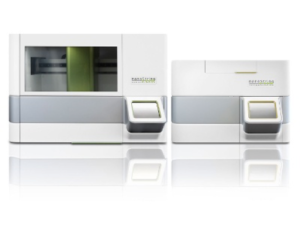
Nanostring nCounter Analysis System
Manufacturer’s description: The nCounter® Analysis System offers a simple, cost-effective way to profile hundreds of mRNAs, microRNAs, or DNA targets simultaneously with high sensitivity and precision. The digital quantification of target molecules and high levels of multiplexing eliminate the compromise between data quality and data quantity, producing excellent sensitivity and high reproducibility for studies of hundreds of targets. The system uses molecular “barcodes” and single molecule imaging to quantitate up to 800 unique transcripts in a single reaction.
Applications currently used: Gene expression and miRNA analysis on FFPE tumor samples
Fluidigm Biomark HD System
Controller AX (Access Array 48.48), Controller HX (Dynamic Array 96.96), Controller MX (Dynamic Array 48.48)
Manufacturer’s description: Fluidigm’s revolutionary integrated fluidic circuits (IFCs) empower life science research by automating PCR reactions in nanoliter volumes. This means using less sample and reagent, and a single microfluidic device, to achieve the high-quality, consistent results your work depends on. The Biomark HD system runs IFCs in either real-time or end-point read modes, bringing flexible, efficient and economical PCR solutions to a range of applications such as digital PCR, gene expression, genotyping, library preparation for next generation sequencing.
Application currently used: Gene expression, genotyping and library preparation
Applied Biosystems 7900 HT Fast Real-Time PCR System
Manufacturer’s description: The Applied Biosystems 7900HT Fast Real-Time PCR System is the only real-time quantitative PCR system that combines 384-well plate compatibility with fully automated robotic loading. Acknowledged as the gold standard in real-time PCR, the 7900HT system combined with TaqMan®Assays enables you to achieve unprecedented throughput and flexibility, allowing you to pursue projects beyond the scope of previous real-time instruments
Application currently used: Gene expression analysis, allelic discrimination, library quantification
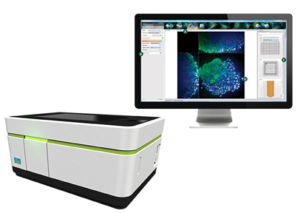
Operetta CLS High-Content Analysis System
Manufacturer’s description: The Operetta CLS system combines speed and sensitivity with the powerful and intuitive data analysis. It is a combination of technologies with a powerful, stable 8x LED light source for optimal excitation of fluorophores and confidence in results. It contains also a proprietary automated water-immersion objectives with very high numerical aperture enable high resolution and fast read times with minimal photodamage. The confocal spinning disk technology provides a fast and gentle imaging process, enabling efficient background rejection, live cell experiments, and 3D imaging. Its large format sCMOS camera delivers low noise, wide dynamic range, and high resolution for sensitive and quantitative measurements at short exposure time.
Application currently used: Fixed-cell assays, Live-cell assays, Complex cellular models, FRET assays, Phenotypic fingerprinting
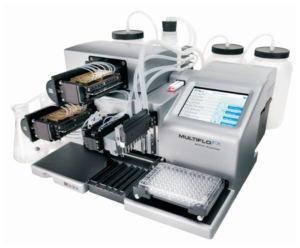
Biotek MultiFlo™ FX
Manufacturer’s description: MultiFlo™ FX is an automated multi-mode reagent dispenser for 6- to 1536-well microplates. MultiFlo FX incorporates several unique technologies in its modular design, such as Parallel Dispense, RAD™ Random Access Dispense and the new, patent-pending AMX™ Automated Media Exchange modules to facilitate a variety of liquid handling applications from 2D and 3D cell culture to concentration normalization assays, ELISA, bead-based assays and more. A fully configured MultiFlo FX replaces up to five liquid handlers, saving space, time and instrumentation budgets.
Application currently used: Cell culture for automated reagent dispensing and washing (6to 384 wellplates)
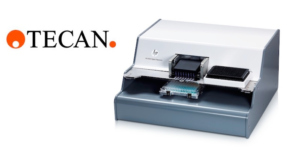
TECAN HP D300 digital Dispenser
Manufacturer’s description: Fast and accurate determination of a candidate compound’s IC50 provides drug discovery biologists with valuable information for the development of new pharmaceuticals, yet traditional techniques are both time consuming and laborious, with no standardization across the industry. The HP D300 Digital Dispenser offers a simple method for streamlining your workflow, offering picoliter to microliter non-contact dispensing of small molecules in DMSO directly into your assay plate. Using HP’s Direct Digital Dispensing technology, this convenient benchtop solution requires almost no set up time, and single use T8 Dispenseheads virtually eliminate the risk of crosscontamination. It allows rapid delivery of any dose to any well, saving time, minimizing waste of valuable compounds and accelerating drug discovery.
Application currently used: Cell culture for delivery of pharmacological compounds in 96 and 384 well plates
Our Lab
FunGeST Lab – A Multidisciplinary, Young & Motivated Team
Brief history of the team
FunGeST “Functional genomics of solid tumors”, directed by Jessica Zucman-Rossi, was created in 2005, as Inserm U674, it was renewed in 2009 and 2014 as UMR1162, ranked “incontournable” by Inserm as a mixed structure endorsed by four entities: Inserm, Universities Paris Diderot, Paris Descartes and Paris Nord. It is currently located at the University Hematology Institute site in a building managed by the CEPH (Centre d’Etude du Polymorphisme Humain, Foundation Jean Dausset). Since January 2019, the lab take part of Centre de Recherche des Cordeliers Research Center – Inserm UMR S1138 as team 28.
Jessica Zucman-Rossi, is professor of Medicine in Oncology (PUPHex) at university Paris Descartes and HEGP, full time for research. She directed the Inserm U674, U1162 and UMRS1138 – team 28 since 2007, was chairman of the Inserm scientific committee devoted to Oncology, Genetics and Bioinformatics from 2012 to 2016. She is editor at Journal of Hepatology (IF=12.4), executive secretary of the International Liver Cancer Association (ILCA). She published 157 original papers and has an international recognition in the field of genomics of human cancers and more specifically in liver tumors. Since January 2019 Pr Zucman-Rossi-Rossi is the director of the Cordeliers Research Center.
Our missions
Our mission is to develop basic genomic approaches based on human tumors analyses to identify new mechanisms of tumorigenesis and to transfer this knowledge into biomarkers and therapeutic targets that could be introduced in clinical care. In particular, we aim to identify new genomic alterations and mechanisms of carcinogenesis. We also aim to identify new risk factors and genetic predispositions promoting the development of tumors. Our general strategy is based on the omic’s analyses of large cohorts of patients with liver tumors (benign and malignant), mesothelioma and clear cell renal carcinoma. The group was pioneer in the elucidation of the molecular classification of benign and malignant liver tumors. Then we perform (1) functional validation using cell and animal models and (2) we translate our findings into the clinics to improve surveillance, diagnosis, prognosis, treatment and follow-up of the patients.
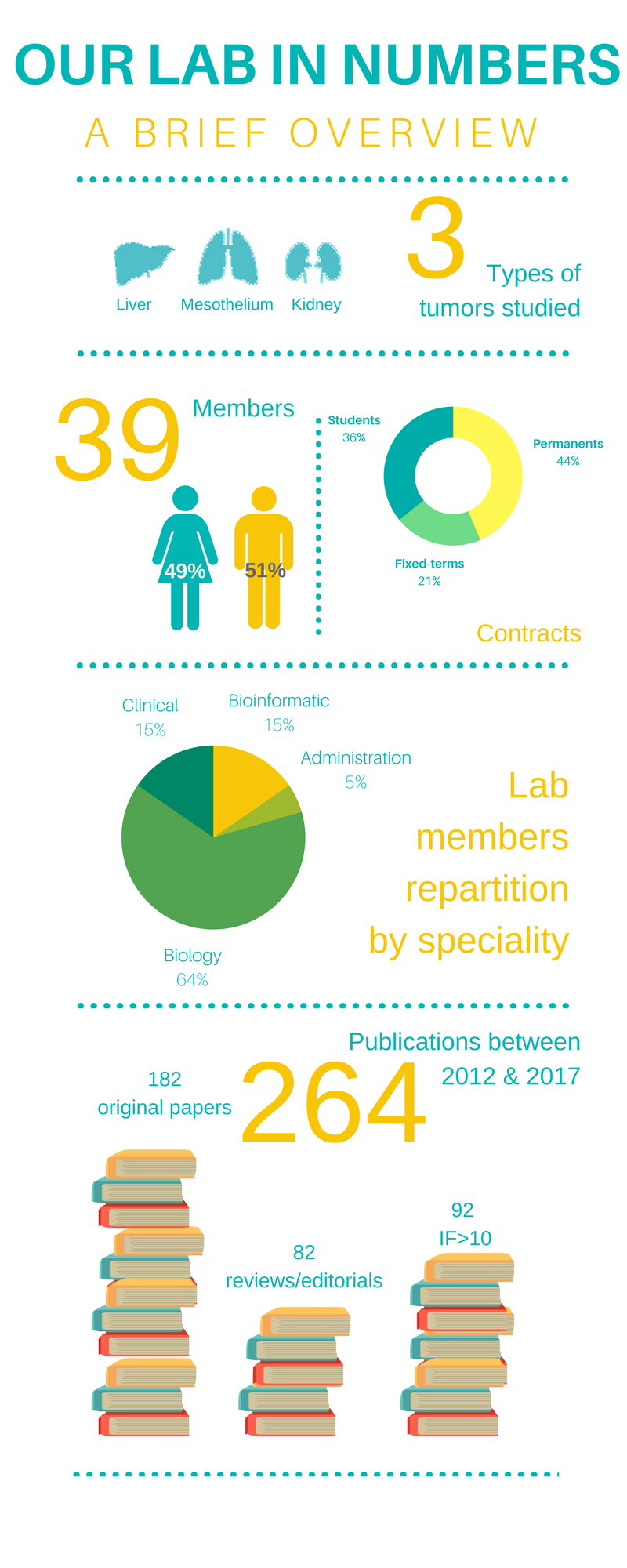
Our task forces
The team include a total of 39 peoples organized in 5 groups with their founded projects:
- “Functional Genomics of Liver tumors” led by Jessica Zucman-Rossi focusing on the characterization of genomic alterations in benign and malignant liver tumors, functional validation, identification of new risk factors and genetic predisposition and translation to the clinics.
- “Functional Genomics of Mesothelioma” led by Didier Jean focusing on the pathogenesis of mesothelioma, search for new therapeutic targets with genomic approaches.
- “Therapeutic Targets in liver tumors” led by Sandra Rebouissou & Jean-Charles NAULT focusing on the identification of therapeutic targets in liver tumors.
- “HPV Tumors ” led by Hélène PERE & David VEYER focusing on the pathogenesis and the characterization of the Human Papillomavirus tumors.
- “Genomics of Pediatric Liver Tumors” led by Theo HIRSCH focusing on the development and application of innovative strategies for integrative genomic data analysis of pediatric liver tumors




